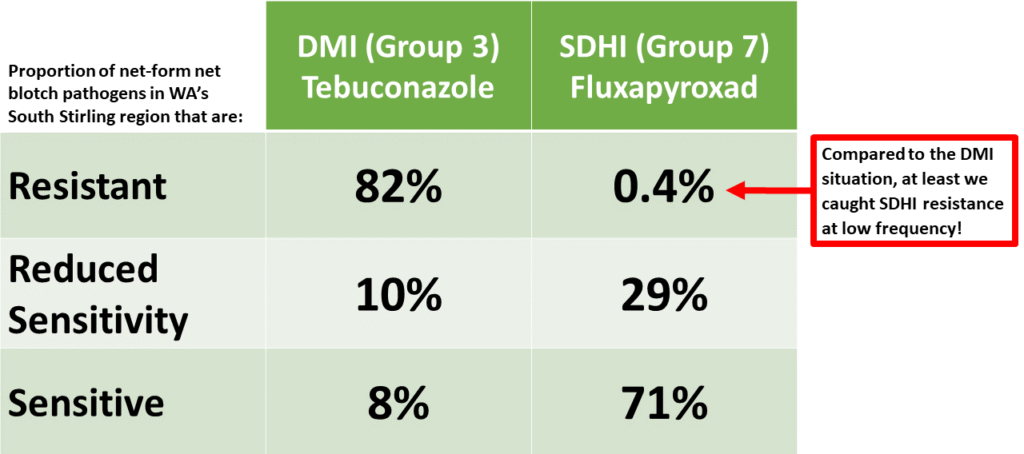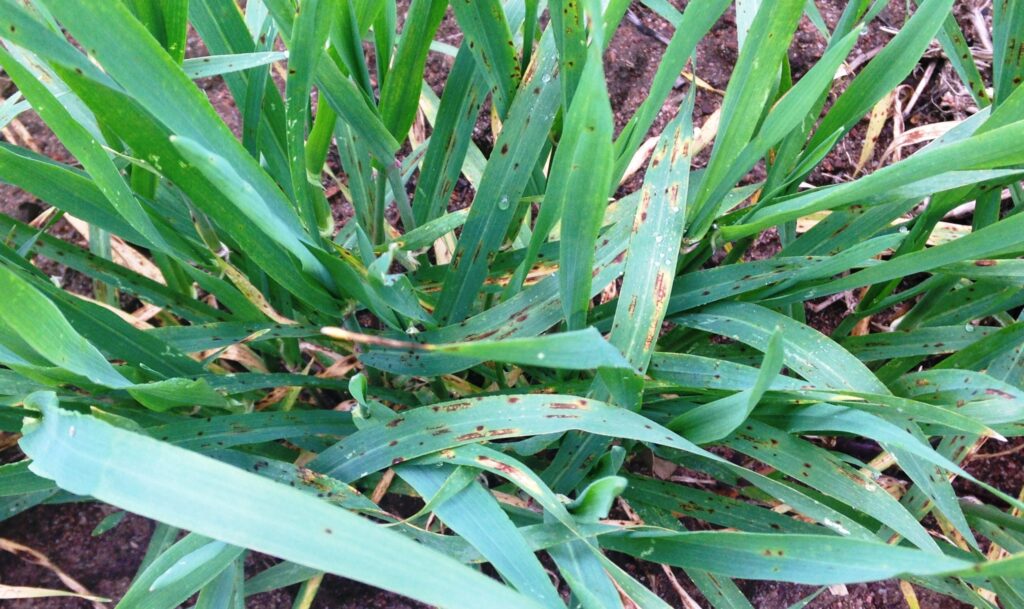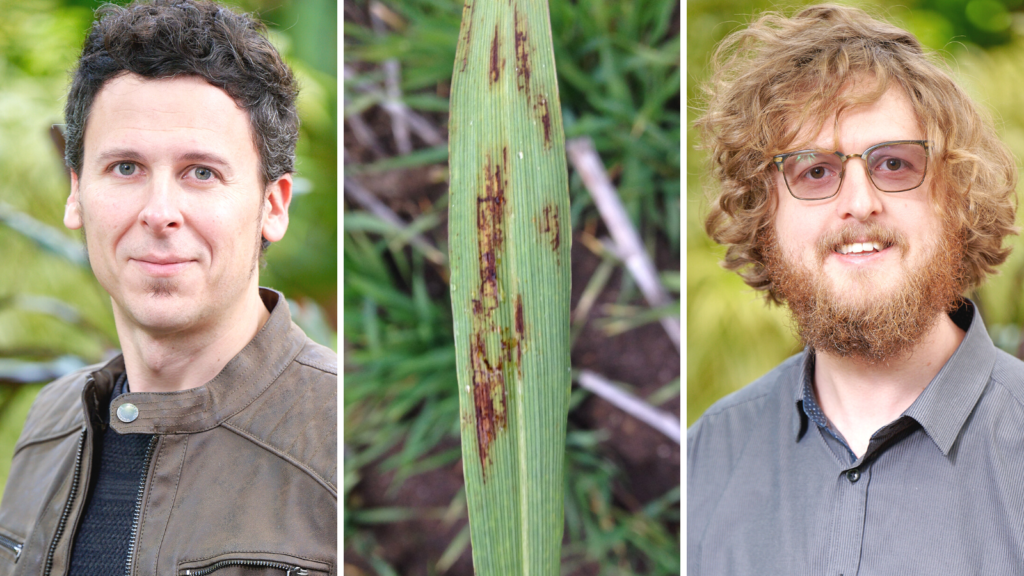Courtesy: Megan Jones, CCDM, original article published online – WA joins SA with 2 out of 3: DMI + SDHI resistant Net-form net blotch – CCDM
Thanks to a recent CCDM survey, net-form net blotch on barley has been identified as resistant to SDHI (Group 7) fungicides in Southern WA, with potential to reduce options for disease control in the future.
Surely you’ve heard this Meat Loaf song before:
I want you, I need you
There ain’t no way I’m ever gonna love you
Now don’t be sad (don’t be sad)
‘Cause two out of three ain’t bad
This is now the case for Southern WA, who now have the barley disease net-form net blotch resistant to two out of the three main fungicide modes of action – including DMI (Group 3) fungicides tebuconazole, epoxiconazole, propiconazole and prothioconazole (detected back in 2016) and now, thanks to a recent CCDM survey, SDHI (Group 7) fungicides.
Now don’t be sad Southern WA, because at CCDM, we’ve managed to detect SDHI resistance early, while it is still at a low frequency!
And furthermore, QoI (Group 11) fungicides are still working well! (Read below to find out about a newly discovered mutation affecting QoI fungicides, thankfully not associated with field failure at the moment).
But feel free to be a little bit sad, as this has the potential to reduce your options for disease control in the future, and if nothing is done about it, there could be a repeat of what happened in the Yorke Peninsula of South Australia when both SDHI- and DMI-resistant net-form net blotch swept the barley fields.
In a 2022 fungicide resistance survey by CCDM in WA’s South Stirling, net-form net blotch was not only identified as resistant to SDHI fungicides, but we were also able to determine its frequency (read on to find this out).
How bad is the situation?
Back in 2021, CCDM was alerted to some concern about net-form net blotch resistance to SDHI, which followed with DPIRD’s Kith Jayasena sending samples to CCDM laboratories to test for resistance. From these samples, a SDHI fungicide resistance mutation was detected in net-form net blotch.
But how much was out there? What’s the frequency of the resistance? And how did this impact disease control knowing that we also have DMI resistance? We had to find this out.
So, in 2022 the CCDM team headed to the South Stirling region, collecting 155 net-form net blotch samples from 16 paddocks to represent the pathogen population and get an indication of the fungicide resistance frequency.
Once in the lab, a total of 283 net blotch isolates were produced, and from their analysis they discovered the following:

What does all this mean?
According to CCDM’s Wesley Mair and Fran Lopez-Ruiz, this region can expect these numbers to change very quickly.
“Conducive conditions, stubble retention, high levels of net-form net blotch infected seed and using the same fungicide repeatedly will only select these resistant populations even further, increasing their frequency,” Fran said.
“We’ve seen this in the Eastern States, particularly in the Yorke Peninsula, when sensitive populations were replaced by resistant ones very quickly, due to the conducive conditions that allowed for selection.”
Wes said in the lab they were able to confirm that the mutation found in WA’s South Stirling was different to the mutation found in the Yorke Peninsula, which saw widespread fungicide resistance to SDHI fungicides in 2019.
However, the mutation in the South Stirling area is the same as the mutation found in the South Australia-Victoria border region in 2019 and in Victoria in 2021.
“The good news is that the frequency of the resistant mutation in WA’s Southern region is very low, so it may not be as dire as the Yorke Peninsula situation, as long as we keep good management strategies in place,” Wes said.

What can be done now?
Fran said while the DMI fungicide group is quite diverse and not all active ingredients are compromised, growers should avoid using tebuconazole, propiconazole and epoxiconazole as a stand-alone product and rotate the DMI fungicide actives within and across seasons. They should also try keep to just one SDHI and one QoI application per season and avoid SDHI application where high frequencies of fungicide resistance exists.
This advice is also written in the Australian Fungicide Resistance Extension Network (AFREN) guide, which further identifies five key actions aimed at avoiding and managing fungicide resistance in any crop and region:
- Avoid susceptible crop varieties – where possible select resistant or less susceptible varieties
- Rotate crops – use time and distance to reduce disease carry-over
- Use non-chemical control methods to reduce disease pressure – manage stubble and the green bridge; sow at the best time to reduce disease presence; implement good hygiene practices
- Spray only if necessary and apply strategically – stay within the label rates
- Rotate and mix fungicides/MoA groups – use mixtures (if available)
For an AFREN factsheet on management of net-form net blotch, click here
But at least we don’t have 3 out of 3 (in net blotch)… yet.
Recently, BASF announced a discovery of a genetic mutation affecting QoI fungicides in net-form net blotch, detected from a sample collected from a product trial in the Yorke Peninsula.
This detection is the first known occurrence of the mutation in Australia.
Fran said while this is concerning, the mutation has so far not been associated with field failure. However, he wouldn’t be surprised if reports came through due to the accumulation of this mutation in the pathogen population as the direct consequence of overusing QoIs.
“It’s happened in spot-form net blotch, where the disease was hard to control in paddocks when a mutation affecting SDHIs but not associated with field failure was found at very high frequencies, so the same could happen to net-form net blotch and QoIs,” he said.
“But if growers practice AFREN’s “fungicide five” and work together to keep resistant pathogen frequencies low, we can keep using our three main active groups for years to come, and I am very optimistic this will be the case.”
If you suspect fungicide resistance in your paddock, contact CCDM’s Fungicide Resistance team at frg@curtin.edu.au.

